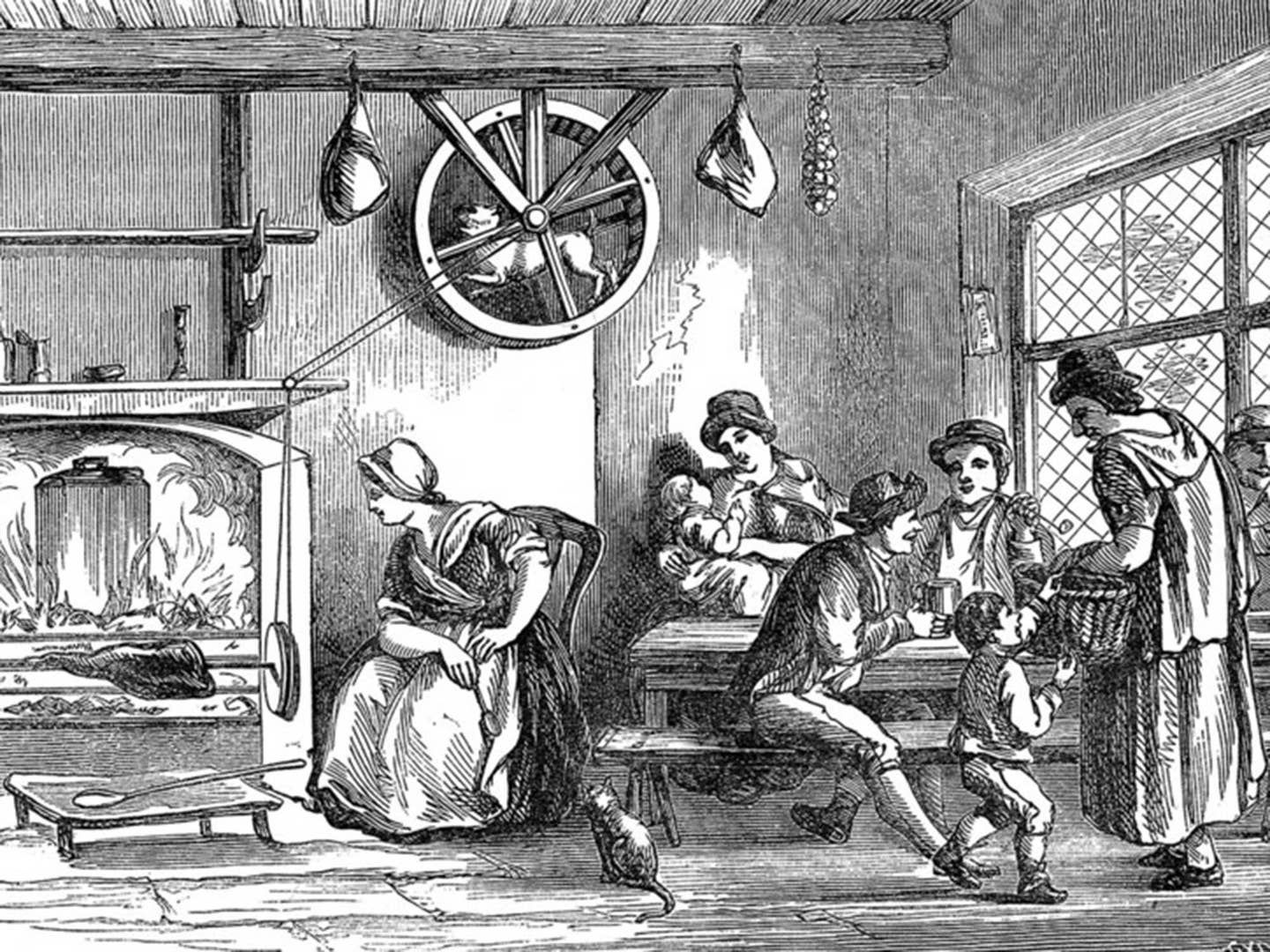
This Extinct Dog Breed Was a Genetically Engineered 17th Century Kitchen Appliance
Turnspit dogs ran on giant hamster wheels that powered meat-roasting spits
These days, our furry friends don't help us out much in the kitchen—besides as a form of entertainment—but in the 17th century, one breed of dog was created specifically as a high-tech solution to a household need. According to Atlas Obscura, the now-extinct turnspit dog, or Canis vertigus, was a common fixture in European kitchens from the 16th century until the mid-1800s.
Featured in Edward Jessy's Anecdote of Dogs, the canines are described as "long-bodied, crooked-legged, and ugly dogs, with a suspicious, unhappy look about them, as if they were weary of the task they had to do, and expected every moment to be seized upon to perform it." That task was simply to run, constantly, on an apparatus that resembled a hamster wheel. It may be comical to imagine, but when activated, the hamster wheel would pull a set of connected ropes or chains that would then rotate a large bird, ham, or roast that was cooking over an open-fire spit. Before the pups came along, the task of rotating the heavy iron spikes was delegated to a "spit boy," who'd have to hand crank the spit for hours, standing by a sweltering flame.
The breeding of turnspit dogs tells us a few things about diets in that era, most obviously that large hunks of meat and wild game were cornerstones for feasts, especially with wealthy families. Outside of the kitchen, the turnspit dogs were also used for “fruit presses, butter churns, water pumps, and grain mills.” On their off days, they would accompany their masters to church to serve as foot warmers (seriously).
For those who can't even get their dogs to take a walk, it might seem unlikely that any critter would willingly toil away next to burning heat, surrounded but not distracted by the scent of cooking meat. But the dogs, speculated to be a mix of the Welsh corgi and several types of terriers, were "highly specialized for their main task," from their dense weight to their natural inclination to move constantly. They were also overworked and abused by their owners, who might throw in a hot coal to burn their feet if moving too slowly. As Modern Farmer reports, "the wheels were close enough to the fire to fill the dogs lungs with smoke and make them unbearably hot."
Sadly, for hundreds of years, their efficiency made them too essential to get a chance at freedom. It wasn't until animal rights efforts in the 1900s made a fuss that the public turned away from the use of the cooking canines—ASPCA founder Henry Bergh is thought to have founded the organization in disgust after seeing a turnspit dog at a hotel in Manhattan.
Today, descendants of turnspit dogs are believed to survive in the form of a Welsh breed called the "bowsy terrier." However, the last pure member of the breed rests in peace (and taxidermy form) at the Abergavenny Museum in southeast Wales.
Keep Reading
Continue to Next Story










